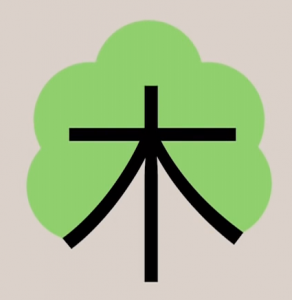Chineasy: Learning the Basics of Chinese Characters
Chineasy: Learning the Basics of Chinese Characters
By Lola de Morán
“A picture is worth a thousand words”. This is the moto that must have inspired ShaoLan Hsueh when she decided to come up with her innovative Chineasy project.
After her successful presentation at a TED talk, DLD (Digital-Life-Design) invited her to speak at a conference in Germany in 2014, to explain how her Chineasy project helps learn written Chinese faster than with most current methods, by transforming simple characters to a picture that is more memorable.
The idea that prompted her to create a new learning tool was based on a well-observed need to make the Chinese language more accessible to westerners. There is no doubt a strong need and interest nowadays to communicate in the language of the country with the highest population, and with an abundance of economic opportunities for business. However, she probably also realized that fact only guarantees the initial motivation to embark on the process of learning such a complex language. Maintaining the continued interest of the learners and helping them attain a certain level of language comprehension would require the right teaching tools.
So how exactly did she envision this teaching tool? How did she come up with the idea of transforming Chinese characters into images to help with the language learning process? ShaoLan was born and raised in Taiwan, but later moved to London where she has lived ever since. It was her own experience as a Mandarin speaking mother with English-born children that put her face to face with the challenges any Chinese language learner faces, be it lack of interest, the difficulty of the language itself or the inefficacy of the available teaching methods. Based on her account of the experience, it seems that everything she tried to get her children to learn her native tongue was short of being effective, as most of the teaching systems at the time relied heavily on repetition and speaking a few words, rather than on recognizing the characters.
If you are a parent or remember how you learned best as a child, you will likely acknowledge that what helped you/your kids the most with understanding and memorization were clear and simple visuals that described any given concept. That very revelation, in combination with her artistic skills and background in technology and social media, gave ShaoLan all the perfect ingredients for a ground-breaking language learning software. She built her own program to analyze, log and group several characters together, she would break them down and then proceed to commission illustrations of some of the most used characters.
She has several videos available on-line where you can observe the characters combined with the created illustrations, as well as listen to ShaoLan’s explanation of each character. As she explains, “If you see a pig under a roof, that means ‘home’, because ancient Chinese people raised pigs at home”. You could agree that, with such depiction and explanation, you are bound to not only learn and retain the meaning of a character as a word, but also its relationship with the Chinese culture. You cannot separate culture from language, they are an intrinsic part of each other and you cannot bridge communication gaps without a true understanding of the way of life and thinking of an entire culture.
The use of imagery and simplification makes Chineasy a very seductive and memorable method for learning purposes and ShaoLan’s children, now knowing somewhere between 200 and 300 characters, are a true testament to its effectiveness. Now that’s a picture worth a thousand words!
Would you like to learn your first set of Chinese characters? Check out ShaoLan’s Lesson 1 video: https://www.youtube.com/watch?v=T5FNvW19GbA
If you are interested to see the DLD conference video explaining how Chineasy works, visit https://www.youtube.com/watch?v=VBbzjDjlfSw&feature=youtu.be
Three examples:
This is the sign for ‘tree’.
On the left is a cow and on the right a pig.



